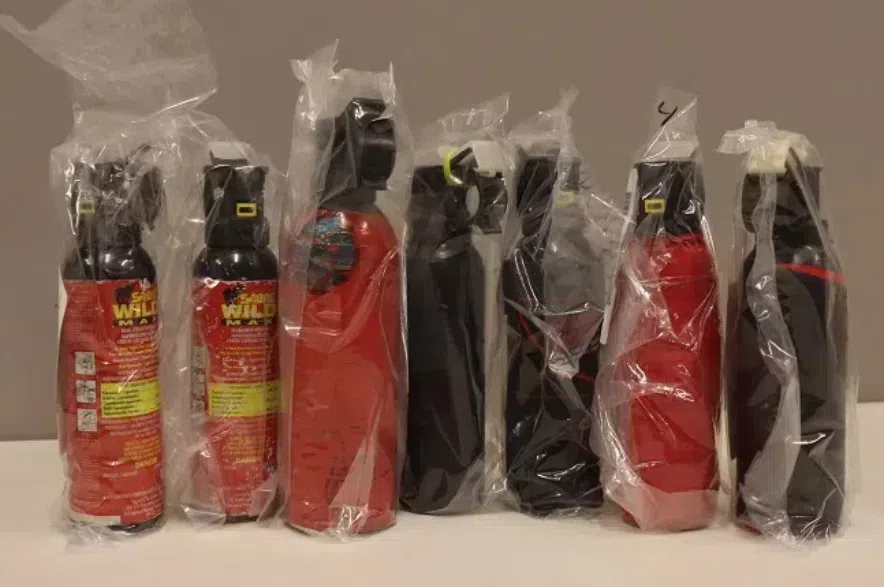Police were busy on Tuesday evening, responding to three separate incidents involving bear spray.
The first happened shortly after 5 p.m., when a woman reported that she was bear sprayed on Laurier Drive.
Read More:
- Saskatoon police briefs: Woman bear sprayed in dispute over cigarette
- Saskatoon police officer dragged by SUV after traffic stop
- Two kids, ages seven and eight, bear sprayed in Saskatoon: Police
The second incident happened on 22nd Street West at around 11:30 p.m., when officers were called to a restaurant for a report that two men had been bear sprayed.
The third bear spray case happened just 15 minutes later, when police were called to a home on Lief Erickson Place in the city’s Westmount nieghbourhood, where “several people” were suffering the effects of bear spray.
“In all incidents, the suspects fled prior to police arrival,” the Saskatoon Police Service said in a statement.
Man treated for stab wounds
Early on Wednesday morning, Saskatoon officers responded to a parking lot on 22nd Street West where a man had been stabbed.
Police said the 29-year-old man was taken to hospital for treatment, but his injuries were not believed to be life threatening.
“Anyone with information on these incidents is asked to contact Saskatoon Police Service at 306-975-8300 or Crime Stoppers at 1-800-222-8477,” the police service said.
What is bear spray?
Bear spray is a deterrent containing capsaicin, a chemical found in chili peppers. The canister releases a cone-shaped cloud of spray at a speed of over 100 km/h, approximately 10 m away. Capsaicin inflames the eyes and respiratory system of both animals and humans.
According to bearwise.org, the spray is oil-based, so first aid for the bear spray is to wash off the residue with soap and water, don’t rub your eyes or nose, and rinse your eyes with clean water until the irritation subsides. The effects generally wear off in about 45 minutes, the bear awareness site says.
Late last year, the provincial government announced new regulations aiming to reduce the number of criminal incidents involving bear spray.
The changes include regulations to restrict the possession of bear spray in public urban spaces and a ban on altering bear spray to hide or disguise the product’s identity. Anyone charged under the new regulations could face fines of up to $100,000.
According to the provincial government, police in Saskatchewan have responded to over 3,000 bear spray incidents over the last five years, but the total number of incidents involving bear spray could be much higher when factoring in unreported cases.











